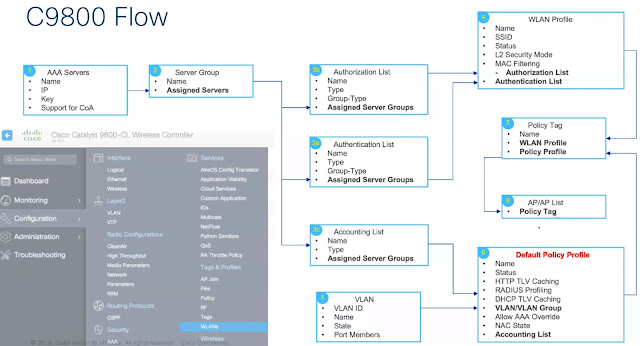1. with vWLC, AP only supports FlexConnect mode 2. switch port is in trunk mode, VLAN 6 is AP management VLAN interface GigabitEthernet1/0/17 description AP3502 switchport trunk encapsulation dot1q switchport trunk native vlan 6 switchport mode trunk end 3. Enabled FlexConnect Local Switching on WLAN 4. Configure Native VLAN 6 on AP FlexConnect page.

